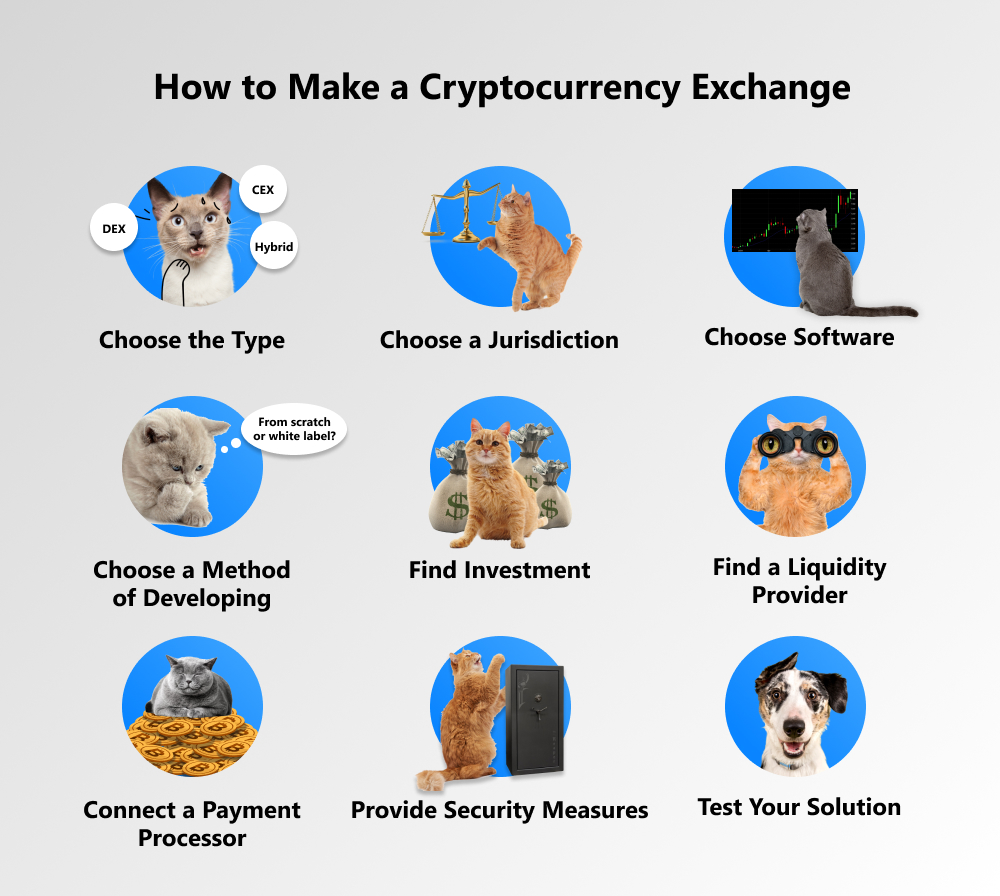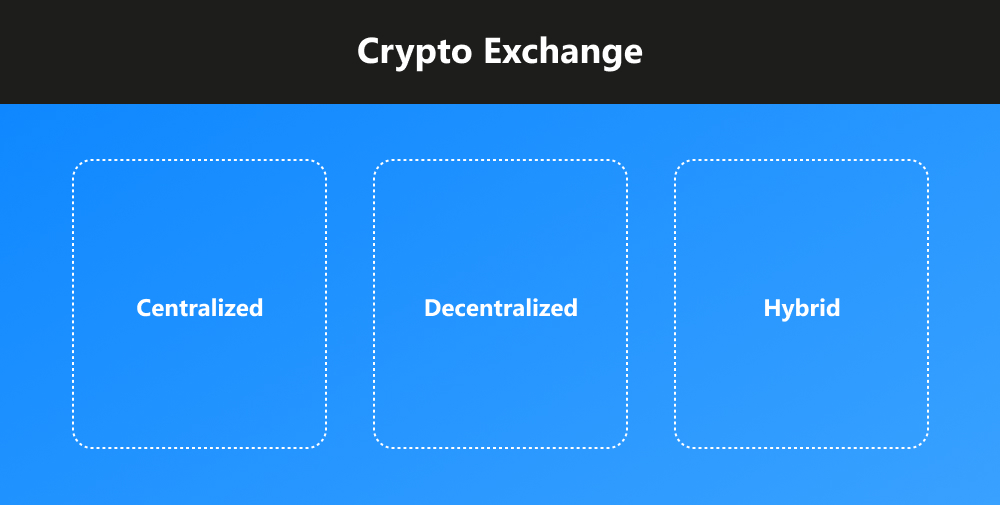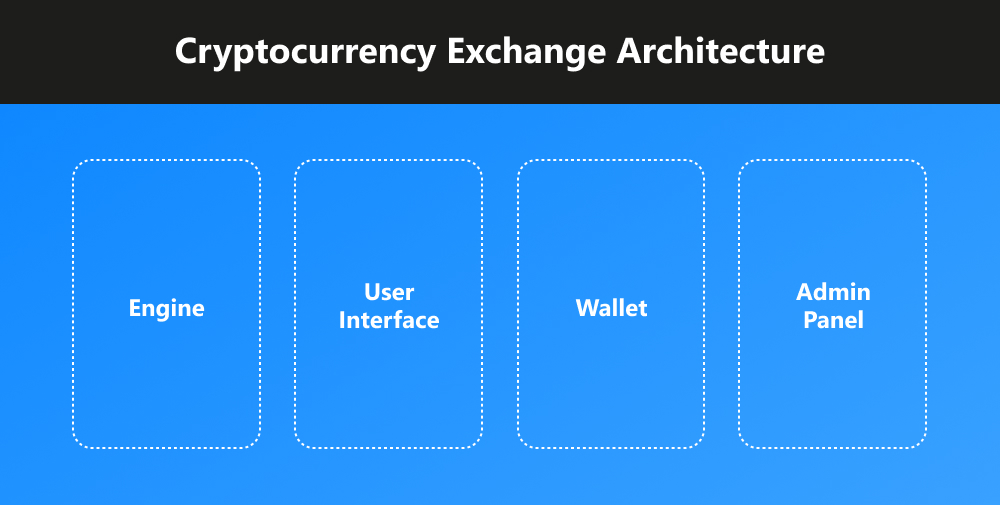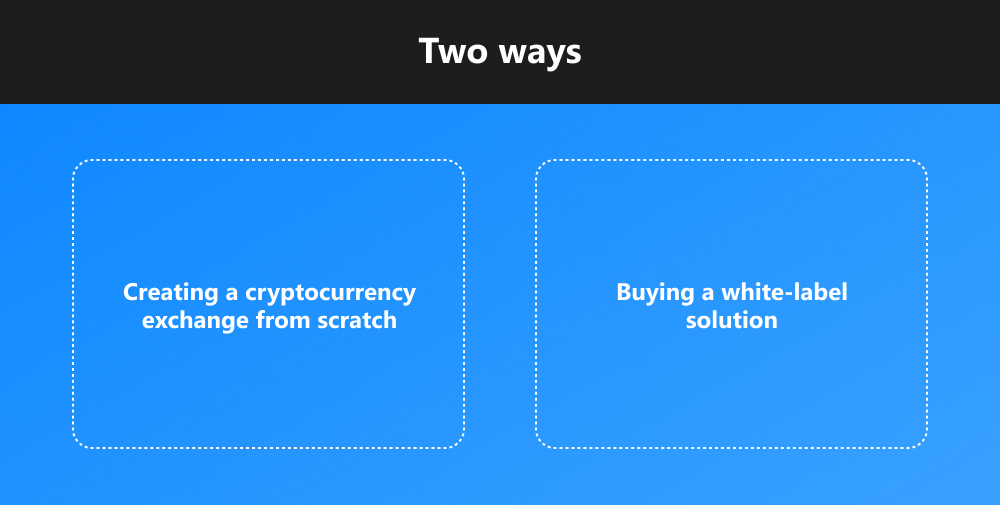When bitcoin passed $50 thousand in February 2021, it considerably rocked the cryptocurrency industry and a vast number of newcomers flushed the market. There are 106 million crypto traders around the world, according to the calculations provided by Crypto.com. They come to the platform to trade their cryptocurrencies and make money. The exchange, in turn, must provide them with a smooth trading experience, high transaction speed, a user–friendly account, a wide pool of trading instruments and pairs, and high–level security. Keep reading our article if you want to know how to build a cryptocurrency exchange and achieve success in this field.
written by:
Andrei Kvasov
Senior Software Developer
When bitcoin passed $50 thousand in February 2021, it considerably rocked the cryptocurrency industry and a vast number of newcomers flushed the market. There are 106 million crypto traders around the world, according to the calculations provided by Crypto.com. They come to the platform to trade their cryptocurrencies and make money. The exchange, in turn, must provide them with a smooth trading experience, high transaction speed, a user–friendly account, a wide pool of trading instruments and pairs, and high–level security. Keep reading our article if you want to know how to build a cryptocurrency exchange and achieve success in this field.
Contents
How to Build a Cryptocurrency Exchange
Well, your journey will consist of the following steps:
Step#1. Choose the Type of a Cryptocurrency Exchange
The very first and most important step that you should take before developing your cryptocurrency exchange platform is to choose the type of crypto exchange. In the future, this will allow you to decide on crypto–exchange software, cryptocurrency storage methods, licensing issues, liquidity management, the ability to trade fiat currencies, and so on.
There are the following types of cryptocurrency exchange platforms: centralized cryptocurrency exchanges (CEX), decentralized cryptocurrency exchanges (DEX), and hybrid exchanges. Let's take a closer look at them.
Centralized Cryptocurrency Exchange
A centralized crypto exchange is the most common way to trade digital currency. This trading platform allows users to buy, sell, and exchange both crypto and fiat currencies. A distinctive feature of CEXs is that users need to trust their money to a third party. Simply put, the exchange acts as a trusted intermediary when dealing with financial assets. For example, clients transferred money to a bank for storage, and the bank received full control over their funds. In this case, the exchange is responsible for the money of its customers and ensures their safety.
Speaking of security, this is the weakest spot of centralized exchanges so far. Cointelegraph revealed that hackers stole $293 million worth of digital currency from cryptocurrency exchanges in 2019. How is it possible? The explanation is simple — assets are stored in wallets that attackers are trying to get to. Therefore, you must provide all modern security measures to protect your customers' assets.
The advantages of a centralized exchange platform include high speed, high liquidity, good market rates, a simple and intuitive interface, a wide range of trading instruments, a wide selection of trading pairs, and many others.
Examples: Binance, Coinbase, Kraken, Gemini, and others.
Decentralized Cryptocurrency Exchange
A decentralized crypto exchange is a trading platform based on blockchain technology and smart contracts. It doesn't store user assets and the personal information of fund holders. DEXs allow traders to enter into transactions directly without the involvement of any intermediaries. Unlike CEX, this type of exchange doesn't require customers to provide their personal data and pass Know Your Customer (KYC) verification, which ensures the highest level of anonymity. Users' assets are stored in personal wallets and protected with private keys, which allows them to have complete control over their funds.
At the same time, decentralized cryptocurrency exchange platforms have a number of disadvantages, including limited functionality, lack of fiat currency (traders use CEX and third–party services to withdraw fiat funds), transaction speed limited by the blockchain, and inaccessibility of margin currency. The decentralized exchanges don't require verification, but they don't comply with legal requirements. Besides, they can't boast of a support service, which makes them unattractive for beginners who also want to buy and sell digital money.
Examples: Uniswap, PancakeSwap, MDEX, Sushiswap, and others.
Hybrid Cryptocurrency Exchange
This option combines the best of both worlds. For instance, transaction histories are securely stored on the blockchain, guaranteeing the utmost degree of safety for users' data and transactions. Meanwhile, a centralized server efficiently manages all operations, allowing for higher throughput. While a few such crypto exchanges exist in the market, they are still in their nascent stages within the industry.
Examples: Qurrex, Eidoo, Legolas, and others.
Also, when choosing the type of your crypto exchange, think through where the users' money will be kept. There are three possible options. Thus, in a CEX, the money can be stored either on a broker's account directly in the exchange or with the help of a custodian service (like BitGo or Gemini). A DEX, on the other hand, doesn't store the users' funds on its servers, so the money are transferred directly from one wallet to another. Every option has its pros and cons, so carefully analyze them to find a perfect solution for your project.
Step#2. Select a Jurisdiction
In order to choose a regulation, you must carefully study all the legal aspects associated with the licensing of a crypto exchange. You need a license not only to conduct exchange operations but also to cooperate with payment systems and banks. In spite of the fact that the popularity of cryptocurrencies is growing, some countries prohibit cryptocurrency transactions. Of course, you should keep away from these countries and consider crypto–friendly jurisdictions.
So, when choosing a country where you're planning to launch your cryptocurrency exchange platform, pay attention to the following factors:
- an attitude of the state towards cryptocurrencies;
- degree of infrastructure development;
- peculiarities of corporate legislation (for example, Japanese laws require an international company to have an office within the country and hire Japanese employees; therefore, it's impossible to remotely obtain a license in this country);
- general market openness;
- political/economic stability;
- cost of services and requirements for the authorized capital;
- terms of cryptocurrency business registration;
- and other factors.
Step#3. Decide on Cryptocurrency Exchange Software
At this stage, you should define the architecture of your crypto exchange service. The technical structure of trading platforms can vary significantly. We'll tell you about the basic components that most services have:
Engine
This is the trading core, which is the backbone of the exchange. The engine performs transactions, processes orders, checks if the user has enough funds to buy or sell a particular cryptocurrency. It's also responsible for displaying prices, forming charts, order books, orders, etc.
User Interface
The user interface allows traders to register on the currency exchange, view an order book, transactions, statistics, balances, and do other things. It can be simple or complex, i.e. equipped with various indicators, trading tools, trading signals, charts, and so on. It doesn't matter whether your exchanging service is designed for beginners or experienced traders, it should be comfortable and adaptable for any device, such as a PC, tablet, or smartphone. Thus, pay attention to the UI/UX design of your trading platform.
Wallet
If you are creating a centralized exchange, you need to create a cryptocurrency wallet as well. They are usually divided into two categories: cold wallets and hot wallets.
- A cold wallet is one that usually stays disconnected from the internet. It can look like a flash drive (a.k.a. a hardware wallet) or a ticket with QR codes (a.k.a. a paper wallet) and requires internet access only for transactions. Ledger and Trezor are cold wallets that are great for a long-term passive investment strategy.
- On the contrary, a hot wallet is connected to the internet most of the time, which makes it an excellent trading solution. MetaMask is an example of such a wallet.
Admin Panel
The admin panel will help you track the current state of your exchange (traffic, trading volume, number of transactions, income from commissions), traders, wallets, transactions, and content. In addition, it will be used to verify users, change and remove content, ban and remove traders' accounts, change commissions, manage marketing activities, and so on.
Step#4. Define a Method of Developing a Crypto Exchange
There are 2 approaches: create a cryptocurrency exchange from scratch or buy an out–of–box solution. We'll tell you the pros and cons of both options so you can make the right decision.
Option 1. Making your own crypto exchange platform from scratch
If you choose this option, you should be carefully prepared for the development process and have a well–experienced team. Please, keep in mind that this process can take at least one year and will require serious investments. Moreover, your project will need to be audited for safety and regulatory compliance. If you don't have experience in this field, it's better to hire professionals who will help you develop a solution that will meet all the requirements.
Option 2. Buying an out–of–the–box solution
This option will allow you to save time and launch your cryptocurrency exchange business much earlier. An out–of–the–box product will be cheaper than making your own platform. However, this model has some pitfalls. For example, this solution can lack some features, which can make you employ developers to customize it. By the way, in this case, you can buy a white label solution, which is a universal software on the basis of which you can build your own exchange. Carefully select the providers offering ready–made projects in order to get a product that will have no technical problems and meet all your demands.
Step#5. Find Investment
If you decide to build your own cryptocurrency exchange from scratch, you need to find investments to hire a professional team consisting of developers, testers, marketers, lawyers, content makers, and so on. According to some calculations, you may need $500 thousand and more to make a trading platform. So, calculate your budget for the creation and maintenance of the crypto exchange in advance.
Step#6. Handpick a Liquidity Provider
The success and competitiveness of your exchanging business will largely depend on liquidity. Your task is to find a reliable liquidity provider with a large network of existing exchanges in the cryptocurrency market. For this purpose, pay attention to the following factors:
- market depth;
- order execution speed;
- price spread;
- legality;
- software;
- customer support;
- compliance with money laundering and other regulations.
Step#7. Connect a Payment Processor
The payment processor will allow users to deposit and withdraw their cryptocurrency funds, as well as make transactions. To choose the right provider, carefully explore what it offers (performance, transaction speed, security, availability, listing of cryptocurrencies). Find out how many companies are already using this payment system. Remember to closely investigate market prices, conditions, feedback, and then make a decision.
Step#8. Provide Security Measures
Despite the high volatility of cryptocurrencies, the market continues to grow and attract new participants. Digital money has already become an integral part of our life. At the same time, cryptocurrencies are also attracting fraudsters who come up with new ways to hack cryptocurrency wallets and make easy money. Even the largest exchanges like Hotbit, Binance, or Poloniex can't always resist hacker attacks.
That's why the owners of crypto exchanges have to constantly keep their fingers on the pulse and improve the security of their funds by various methods. It's vital for your business to spend as much time and resources as possible to take measures in order to maintain the required level of security. These can include two–factor authentication, usage of both cold and hot wallets, database encryption, anti–phishing features, and other up–to–date technologies.
Step#9. Test Your Crypto Exchange
The testing process is another critical stage in the development of your cryptocurrency exchange, which in no case should be ignored. You should make sure that the platform is running smoothly. For instance, you can carry out the following testing procedures:
- Vulnerability testing;
- KYC verification testing;
- Deposit and withdrawal testing;
- Cryptocurrency purchase and sale testing;
- Registration process testing;
- OWASP testing;
- Testing of APIs and WebSockets;
- etc.
Identifying vulnerabilities and problems in the logic of the crypto exchange is needed to protect the personal data and assets of your customers, as well as allow them to make cryptocurrency transactions without any pitfalls. Always remember to collect users' feedback and make the necessary improvements to ensure seamless performance and enhance the user experience.
Step#10. Launch Your Cryptocurrency Exchange
If the testing process is completed and everything is OK, your exchanging service is ready to enter the market and welcome traders. It's obvious that you will continue to maintain, update, and promote the platform. Follow the latest trends to add new features in time and provide your customers with top-notch instruments. Keep track of legislative amendments to make sure that the exchange is in compliance with the cryptocurrency regulations. Always have an eye on new hacking techniques to be able to stand up to cyberattacks and protect your digital assets.
Final Word
As of February 2024, there were 232 spot exchanges in the market with a total daily volume of more than $150 billion, according to CoinMarketCap. The cryptocurrency exchange industry continues to evolve in spite of the exchange rate fluctuations, a pandemic, and other political and economic challenges. Every day, new players appear in the crypto market. They strive to create exchange platforms that meet the most modern requirements. The creators are trying to implement all the key features, add new trading instruments and cryptocurrency pairs, increase the speed and number of transactions, as well as provide maximum protection for their clients' funds.
If you want to start a bitcoin exchange business and survive in this highly competitive market, your solution should at least have a user–friendly interface, state–of–the–art exchange software, round-the-clock and responsive customer support (depending on the type of your exchange), and last but not least, be secured against cyber attacks. Weak protection negates all present-day features since people are primarily concerned about their money.
Do you want to launch a cryptocurrency exchange that will have everything to operate seamlessly? Our experts have enough experience in exchange software development. They are ready to answer all your questions and find the best solution. For more details, please visit our website or get in touch with our support team.

Contacts
Feel free to get in touch with us! Use this contact form for an ASAP response.
Call us at +44 151 528 8015
E-mail us at request@qulix.com









